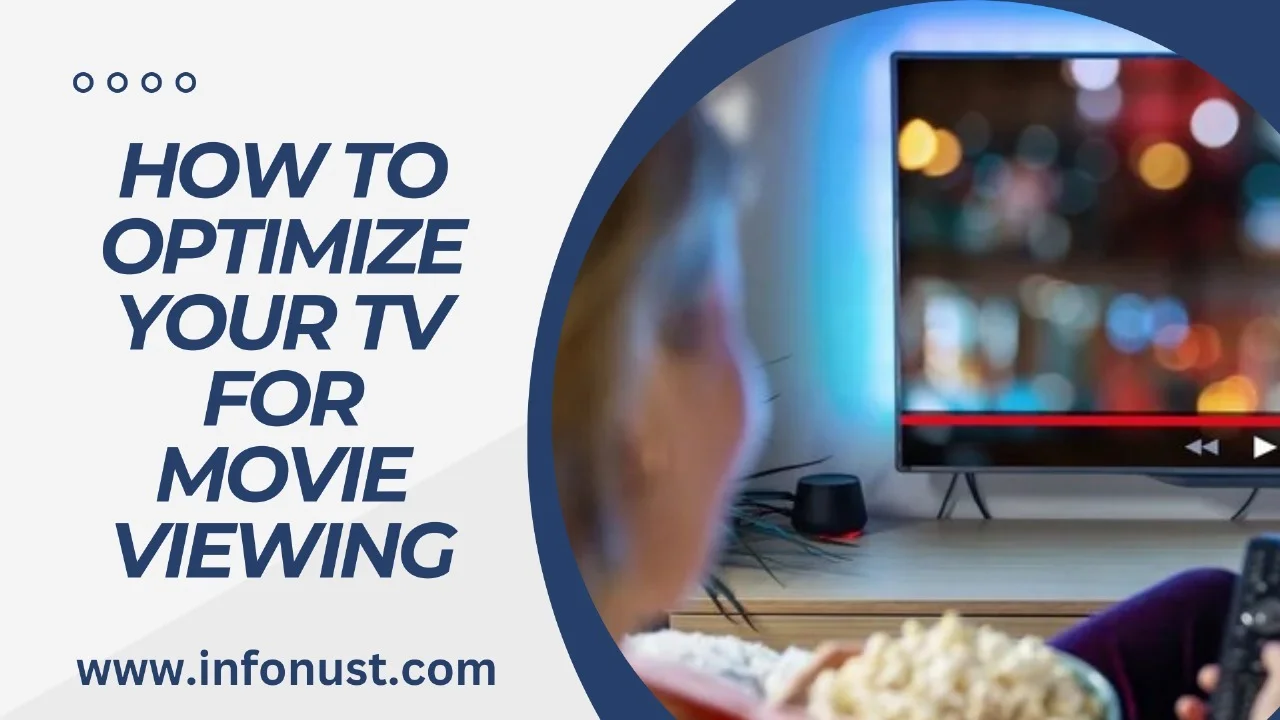The past few years have been fascinating for the film industry. The global pandemic that made audiences hesitant to go to the cinema after two huge strikes by Hollywood’s biggest writers’ and actors guilds The film industry’s future was uncertain. As the preferences of viewers alter, home theaters are now the new cineplex. More films than ever are today being made available for direct streaming, or following a brief, award-qualifying run in the silver screen. Yet, the majority of television owners are unaware that they’re not getting an enjoyable or accurate watching experience.
When you’re asking yourself why your favorite films look bad and look good. It might be the fault of your TV, not the movies you’re watching. Each step in the filmmaking process is intended to give viewers a distinct experience. That ranges from the camera selected to capture raw footage to color grading used in editing. Although theaters are designed to accurately portray these qualities and characteristics, TVs have to have been calibrated, and then optimized in order to fulfil the same payoff.
In this article we’ll go over the TV modifications you can make. If are looking for a cinema-like experience at the comfort of your sofa. From contrast to color We’ve got you covered So, here’s how to improve your TV’s performance to enjoy movies.
Stop motion smoothing

Of all the tips that you’ll get to set up the perfect movie viewing environment at home. The most frequently mentioned advice is to switch off motion smoothing. While it’s an excellent feature to watch sports but it could also degrade the movie. Motion smoothing makes movies appear artificial and dull since it adds frames to the film that aren’t there. To get a better understanding of this technology. Check out our video on the rate of refresh on TVs and image quality.
Motion Smoothing (or motion smoothing) is technique which can benefit make videos material look more fluid through deliberately increasing the rate of frame. Video files are a collection of images played back with the same frame rate, which is measured in frames-per-second (FPS). For example, a 30 FPS video shows 30 frames within a single second. Motion smoothing generates new frames in between them which transforms the 30 frames per second into 60. If you are viewing sports games, it could benefit you observe balls and players more clear. Films differ from one another. Incorporating frames that weren’t in the original can alter the film completely as you’re adding images that the film’s creators didn’t design. In addition, films are usually produced at 24 FPS and, consequently. They appear artificial with motion-smoothing activated which can cause the film to lose the original “feel” of a movie.
Depending on the TV model you have Motion smoothing could be known by many names. Here’s a quick guide:
Amazon TV – Action Smoothing
Google TV – Motion Clarity
Hisense – Motion Enhancement
LG – TruMotion
Roku – Action Smoothing
Sony – Motionflow
Vizio – Smooth Motion Effect
What is the deal with Dolby Vision?
Certain televisions today are equipped with a feature for tuning the picture known as Dolby Vision. Dolby sells Dolby Vision as an enhanced version of HDR which is the technology. That is used to increase the quality of color and dynamic range. Contrary to standard HDR which utilizes universally-setting settings on screens with it enabled. Dolby Vision uses dynamic metadata contained in a video to inform your TV of the settings to utilize. Movies produced using Dolby Vision encoders essentially have a set of guidelines that instruct Dolby-capable televisions on how to properly display them and ensure that the experience you enjoy is the closest to the vision of the director. Certain specifications contained in the metadata benefit to regulate the luminance range along with the color spectrum as well as HDR brightness. You can also control the aspect ratio and frame rate.
Dolby Vision is typically seen as a picture mode feature in TVs that have it. Some TVs might even include many variants of the feature. For instance, TCL Roku TVs have Dolby Vision Normal Dark and Bright modes. In the event that this happens with your TV, it is recommended to begin with the Standard mode since. It’s likely to give the most precise outcome. But, depending on the model of your television, you could be able to determine that a different setting is more suitable. For instance, some experts believe that Dolby Vision Dark to be the desirable option for Sony Bravia televisions, whereas others do not agree. But, in the context of watching movies be sure to stay clear of Dolby Vision Gaming, as it increases the brightness, contrast and color.
Consider filmmaker mode
Wouldn’t it be wonderful to have the filmmaker of a film could visit your home and modify. The settings on your TV to ensure that you experience the way they wanted you to get when you watch their film? That’s probably not the case but the perfect option is a feature known as Filmmaker Mode that’s included on certain televisions. It disables all settings that add additional frames or alter the image source of the video, in order to maximize the entire spectrum of color and contrast. It additionally assure that you’re viewing in the right proportions and at the right frame speed. The main objective for Filmmaker Mode is to replicate as close as you can to the experience of watching movies in theaters in which films are often projected with specialized projectors.
Filmmaker Mode is being promoted by the biggest names in cinema. Including “Killers of the Flower Moon” director Martin Scorsese and “Dune: Part Two” director Denis Villeneuve currently available on televisions manufactured by Benq, Hisense, LG, Panasonic, Philips, Samsung, TP Vision, and Vizio. Filmmaker Mode is the brainchild of Ultra High Definition Alliance, the company that is behind Filmmaker Mode, hopes the mode will become available from other manufacturers in the near future.
Tips for tuning that you may need
Although it’s nice to have broad, expansive modes such as Dolby Vision or Filmmaker Mode, not all televisions have these options and, even on the ones that do, ensure that your TV’s more specific picture settings are properly adjusted and set to the correct settings. If you’ve ever taken a look at your TV’s picture settings, you’ve probably been able to see a plethora of options that range from basic things like brightness, to more complex options like Gamma. Each one of these needs to be adjusted for the desirable film watching experience.
Unfortunately, there’s no universally-fit-all method to tune your TV’s picture. Every TV is unique therefore your excellent option is to make use of test images similar to the ones on the following YouTube video. You can also purchase an ad-hoc disc that has designs. Spears and Munsil is one of the leading companies which add these. If you adjust your settings in line with the images you will be able to assure that your TV is in line with an acceptable standard of image quality. Make sure that you are familiar with the settings menus on your TV that can be extremely complex. In the following section of this article we’ll offer additional an overview of what each option will do and how you can tell whether you’ve got it right.
Be aware that certain TVs keep settings that are universally applied when you change them. Whereas others apply the settings on a per-input or basis of display mode. Once you’ve calibrated your settings, you can switch your TV on an input that is different to determine whether the settings are applicable to that input. In the event that they are not, then you’ll have to apply the settings you prefer for every input.
What is the basic understanding of TV picture settings
These are some of the commonly used TV picture settings and the perfect way to alter them:
Backlight The brightness of the individual LEDs in the panel. The brightness of the panel is determined by the lighting of your space.
Brightness: how dark the blacks appear in your display. In a gradient of white to black, you can adjust the brightness until you see dark black on one side while seeing pure white at the opposite.
Contrast: The distinction between the darkest and lightest area in an image. In a contrast test make adjustments until you are able to discern different colors of white.
Sharpness: How clear the edges of objects seem to appear. Setting this to a high level can result in artificial lines around objects. So make sure to keep it as low as possible.
Color refers to the amount of saturation of an image. The cinema or movie mode of your television usually is tuned to the correct level however, to tune it by yourself, you’ll require a test pattern.
Tint is the amount of green and red that appears in an image. It’s usually calibrated properly on the movie or cinema mode. To calibrate yourself, you can use the test pattern.
Local dimming is used to control backlight zones to provide greater flexibility in contrast. The TV you have may use an alternative name however, if you do are with it, activate it.
We hope you’re on the way to figuring out the settings of your TV. In the same way after you’ve followed the suggestions and tricks provided from this post, then your TV will be now able to play the most recent movies with the highest quality it can. All you have to do is prepare popcorn and then press play.




